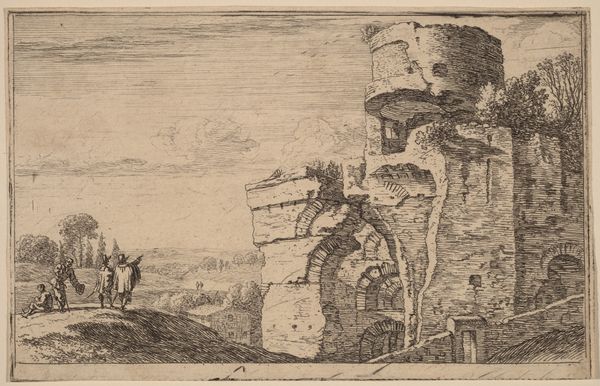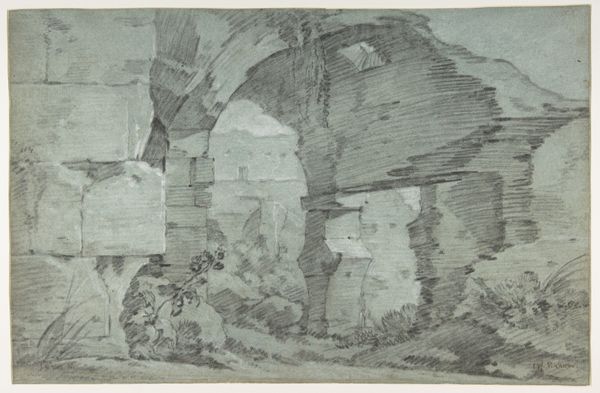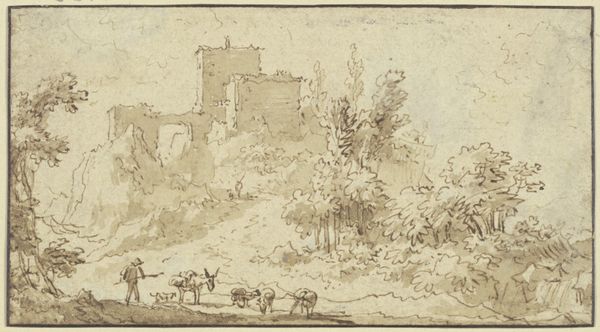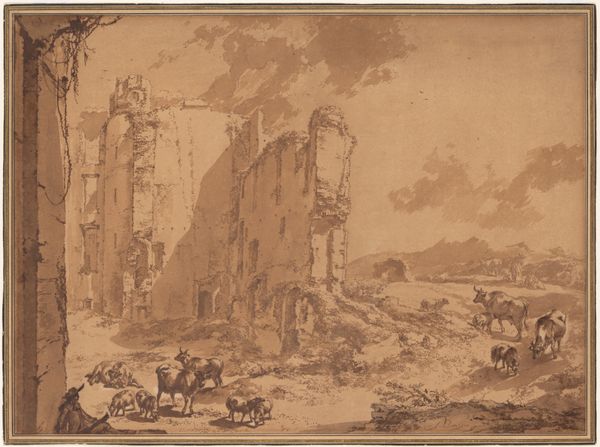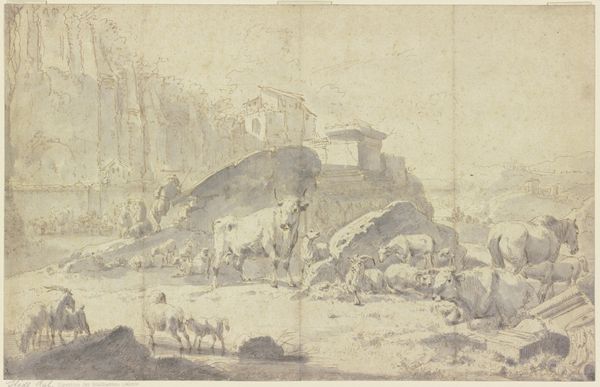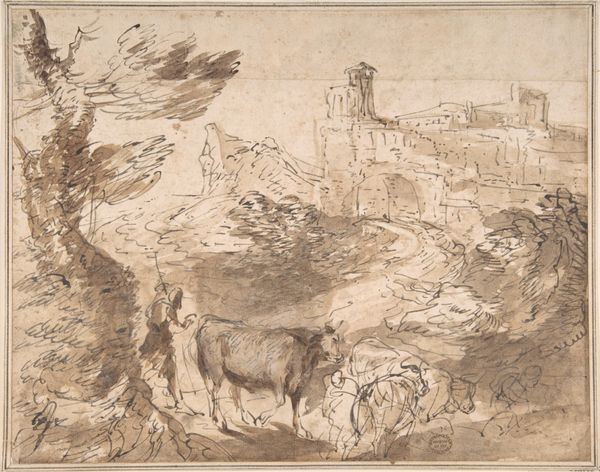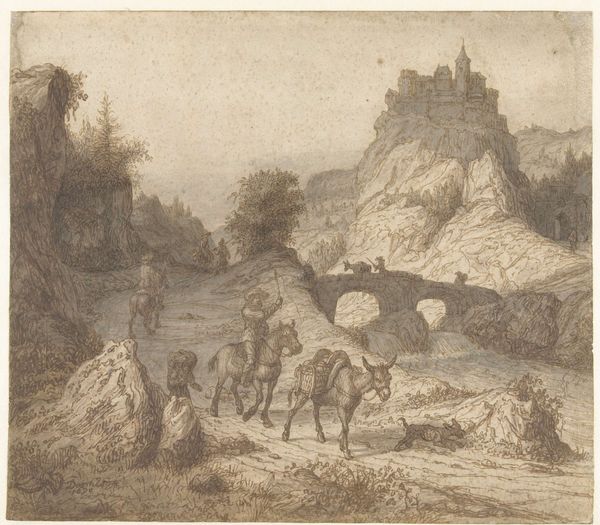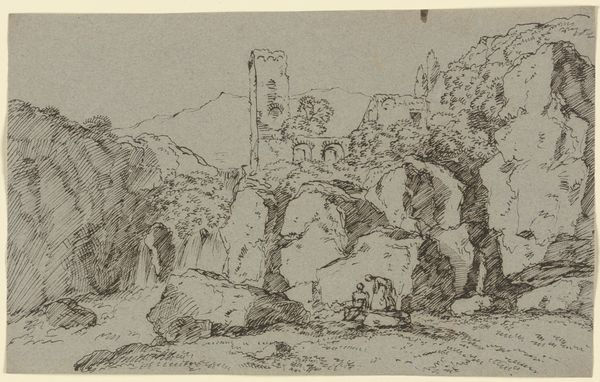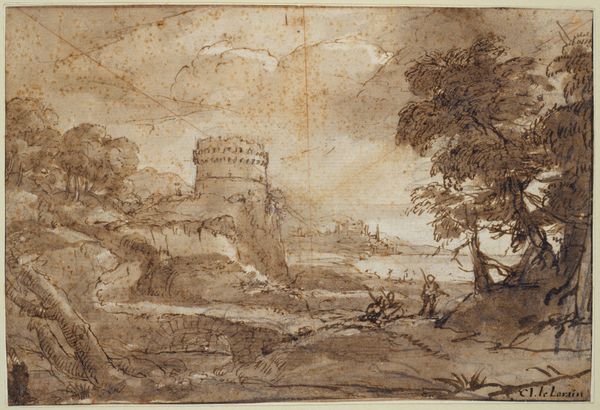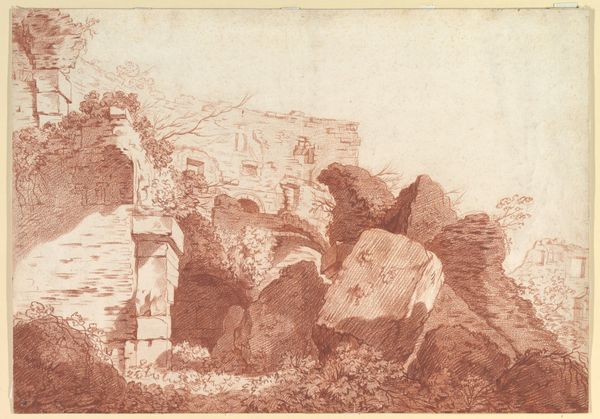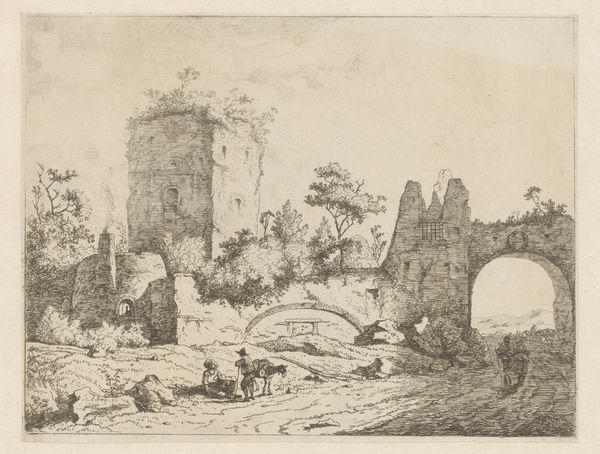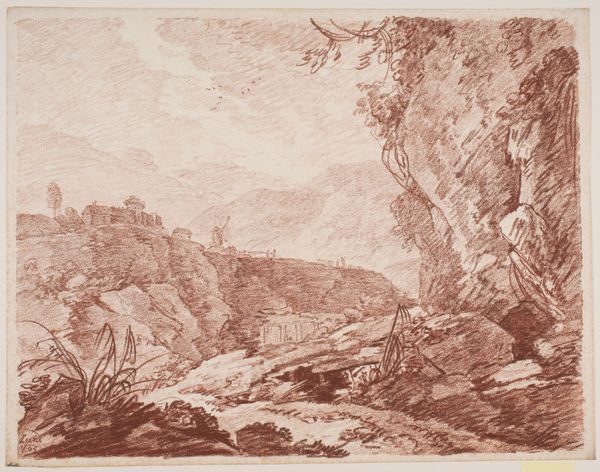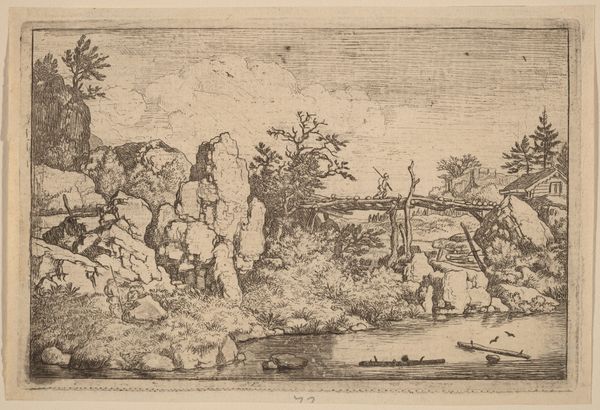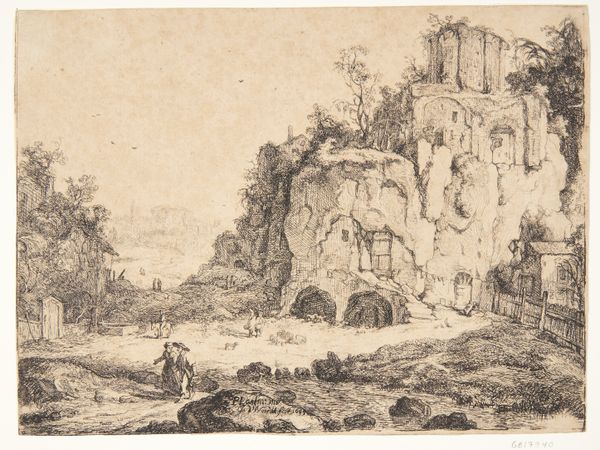
Le Colisée (The Colosseum), in an album containing Recueil de Compositions par Lagrenée Le Jeune (Collection of Compositions by Lagrenée the Younger) 1782 - 1821
0:00
0:00
drawing, print, pencil, charcoal
#
drawing
# print
#
pencil sketch
#
landscape
#
coloured pencil
#
romanticism
#
pencil
#
horse
#
france
#
men
#
genre-painting
#
charcoal
#
history-painting
Dimensions: Sheet: 15 7/8 × 21 9/16 in. (40.3 × 54.8 cm) Plate: 4 1/8 × 5 13/16 in. (10.4 × 14.7 cm)
Copyright: Public Domain
Curator: This drawing, titled "Le Colisée (The Colosseum)," is part of a larger collection of compositions by Jean Jacques Lagrenée the Younger, dating between 1782 and 1821. The artwork resides here at the Metropolitan Museum of Art, made using pencil and charcoal. What strikes you about it? Editor: It feels both chaotic and serene at the same time, which is a contradiction that keeps me looking. The ruin is calm in its size and stability, and the details in the foreground are all action and energy. What material processes would yield that contrast, I wonder? Curator: Indeed, that duality speaks to the heart of Romanticism. Lagrenée was French, a member of the Royal Academy. His career progressed through shifts in political regimes—monarchy, revolution, empire, restoration— and these would have had an impact on how people viewed ancient history and empires. The Colosseum itself takes on different meanings depending on the era in which it is being viewed. Editor: You can really see the changing social relations mirrored in the techniques he used. Look at the economical way the architecture has been sketched with swift strokes that capture its form, versus the richer textures he used on the figures that suggest depth, shadow, weight. How might those choices serve political undertones? Curator: This image presents a dialogue between a glorious past and a tumultuous present. The figures appear small, almost fleeing before the ruins. Perhaps Lagrenée is commenting on the transience of power, a theme that resonates across political upheavals, particularly if we factor in France’s social state at the time, dealing with their own ruins of social change, power, and loss of privilege for some while demanding recognition and enfranchisement for others. Editor: The way that history and lived experience have been laid down together within the materials of this work gives us more insight into its moment. The relationship between labour and its legacy and materiality is deeply embedded within that sketch of a once-monumental arena, made domestic, even picturesque, by way of pencil strokes and toned washes. Curator: Absolutely. And considering Romanticism’s fascination with ruins and their representation of the passage of time, we can see that, even in destruction, histories of gender, identity, and politics shape a narrative within this artwork. Editor: Thank you, those points truly shift my understanding. Curator: My pleasure!
Comments
No comments
Be the first to comment and join the conversation on the ultimate creative platform.
